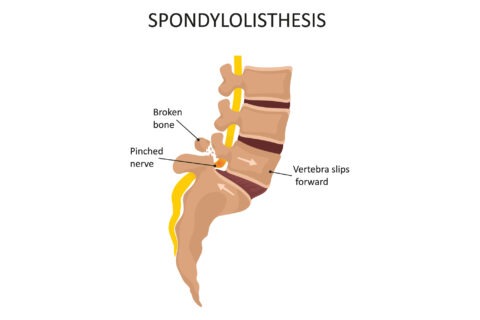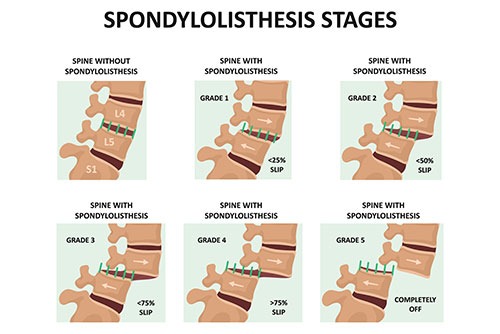What is Spondylolisthesis?
Spondylolisthesis, Cervical Spondylosis is a condition in which one of the bones of the spine (vertebrae) slips out of place onto the vertebra below it. If it slips too much, the bone might press on a nerve, causing pain. Usually, the bones of the lower back are affected.
The word spondylolisthesis comes from the Greek words spondylos, which means “spine” or “vertebra,” and listhesis, which means “to slip or slide.”









